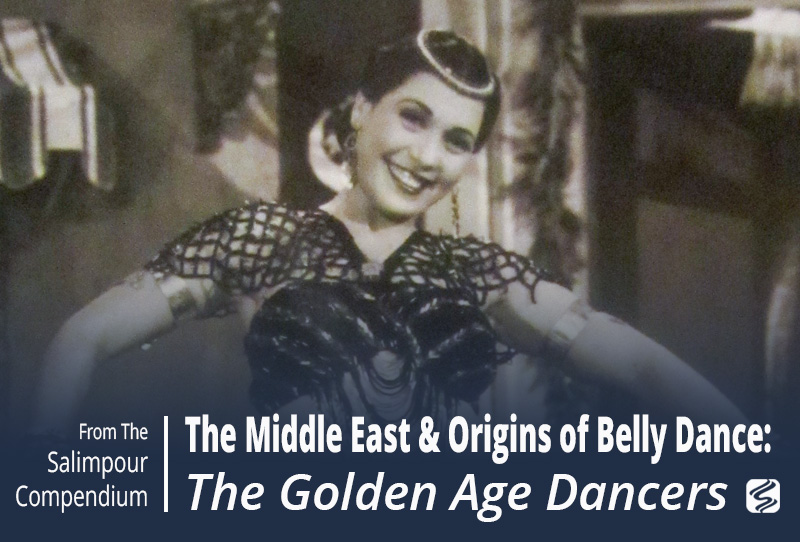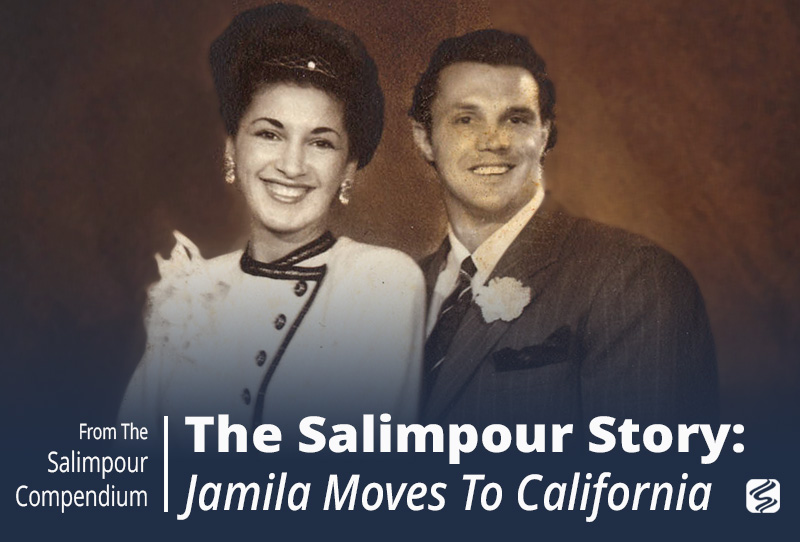Oriental dance as we know it today was shaped by the dancers that appeared at Badia Masabni’s Casino Opera cabaret as well as on screen in Egyptian films. Egypt became the entertainment center of the Arab World shortly after film was invented in the late 1890s.¹ After World War I, Cairo became the home to new cabarets and restaurants catering to a growing tourist industry and upper-class Egyptians seeking to become more Western, and Egyptian filmmakers used singing and dancing stars of the day to draw audiences into the theaters.² Viola Shafik, a scholar of Arab cinema, estimates that music and dance scenes appeared in at least one-third of films produced in the Middle East between 1931 and 1961,³ an era often referred to as the “Golden Age” of Egyptian cinema. The dancers who appeared in these nightclubs and films shaped Oriental dance as we know it today, in its presentation, costuming, movement vocabulary, and international reception.
Badia Masabni and the Casino Opera
According to her autobiography, Badia Masabni was born in Damascus in 1894 (originally as “Wadia”),⁴ in what is now Syria. When she was seven years old, a cafe owner raped her, which according to local custom, brought shame upon her entire family. Partially to escape the stigma, her family emigrated to Buenos Aires, Argentina; many Levantine families moved to South America at the turn of the 20th century. According to writer Jalilah, it was in Argentina that Badia discovered her love of music, singing, and dancing.⁵ Her family moved back to Syria when Badia was a teenager, in hopes of finding her a husband, but the stigma of having been raped prevented her from doing so. As a single young woman she had no means to support herself. First, Badia escaped to Beirut; on the train there, she met a woman who offered to help her, but Badia discovered this woman was the madam of a brothel. Badia wanted a means to support herself that did not involve sex work, so she convinced her mother to move with her to Cairo in 1912,⁶ the center of Arab entertainment, to pursue her love of singing and dancing.⁷
She originally found work playing small roles with the famous George Abiad Theater Ensemble. In 1914, she moved to Beirut once again, but this time to perform in the then well-known theater owned by Madame Jeanette, a French woman who only hired European artists to perform for the club’s mostly upper-class Lebanese clientele. She worked and performed throughout the Levant. While working in Damascus, her childhood tragedy continued to haunt her, as her brother, believing he was defending the family honor, attacked and nearly killed Badia. She recovered and began working with Nagib El Righany, an Egyptian comedian, actor, playwright, and director, and his performance ensemble; she often expertly played male roles.⁸ When she returned with them to Cairo in 1921, she became the star of the company. The two eventually wed, but their marriage was troubled, and Badia left him in 1926.⁹
In the same year, 1926, she opened her own nightclub, the Casino Badia. Her club called a “sala” rather than “cabaret”—in the Middle East, the word “cabaret” denotes a low-class and questionable establishment—featured a program of short acts by both European and Arab performers designed to appeal to European and upper-class Egyptian tastes. Badia even danced and sang several numbers and held a matinee show in the afternoon for women only.¹⁰ It was at this time that the raqs baladi and movement vocabulary performed by the ‘awalim changed into the more contemporary raqs sharqi that we know today. In fact, according to dancer and writer Jalilah, the term raqs sharqi—meaning “dance of the East,” as opposed to raqs baladi which means, “dance of the country(side)”—emerged at this time, when much of the Middle East was under European political control and social influence and was meant to distinguish Middle Eastern dance from dances from European dance styles. Badia modeled the Casino Badia after European nightclubs, seeking to profit off of the increasing number of European tourists in Egypt in the late 1920s, as well as upper-class Egyptians seeking high-class entertainment. Also following European style, Badia hired Western choreographers who integrated turns and traveling steps from ballet and ballroom dance into raqs baladi. The dance performances featured synchronized raqs sharqi ensembles, which had never appeared on a Middle Eastern stage before. The beaded two-piece bra and belt set, which are now inseparable from the image of the “belly dancer,” appeared at this time as well, influenced by Hollywood, which was at the time producing countless films set in a fantasy Orient. ¹¹
In 1937, she made a poor investment in a film project that failed, and she declared bankruptcy. After borrowing money, she opened the Casino Opera in 1940, a nightclub with a movie theater, restaurant, cafe, and an American-style bar. It was here that many famous Egyptian dancers and singers began their careers, such as Samia Gamal, Farid al-Atrash, Tahia Carioca, and Mohammed Abdel Wahab. In fact, many dance scenes in Egyptian films at the time were filmed in the Casino Opera. ¹²
The Casino Opera was a successful business for nearly two decades, but was not without difficulties. During the 1930s, as the Great Depression spread worldwide, police in the neighborhood of Badia’s nightclub briefly attempted to prevent belly dancing, claiming it was the performance of “scandalous acts in public.” In 1933, the police forbade belly dance outright. Badia, however, was a shrewd businesswoman. Her club’s bodyguard would signal to the dancers when a police car appeared outside, and dancers would change their movements to more acceptable “foreign” styles of dance. During the Egyptian revolution in 1952, supporters of the Muslim Brotherhood, as well as of Communists and the Wafd Party (a nationalist liberal political party), demonstrated against the rule of King Farouk, and set fire to several British and French cultural centers, as well as Badia’s former nightclub. ¹³
Badia’s Casino Opera thrived until she sold it to another woman sala owner when the Egyptian government demanded from her thousands of Egyptian pounds in back taxes, and Badia escaped to Lebanon where she spent the rest of her life until her death in 1975.
Of all of the great women of Egyptian dance, contemporary belly dancers owe the most to Badia Masabni, for it was she who initiated the development of what we now know as raqs sharqi or “Oriental” or “cabaret” belly dance. Until the 1920’s, belly dancers mostly performed in small spaces, rarely on theater stages; Badia Masabni’s productions at the Casino Opera included large group choreographies, and Badia brought in choreographers from other dance forms to expand the then-narrow belly dance movement vocabulary. Additionally, at the Casino Opera, dancers such as Samia Gamal and Tahia Carioca, were able to achieve a celebrity status that dancers before them had never attained or were able to attain.¹⁴
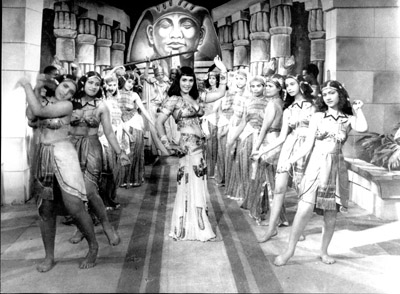
Samia Gamal (1924 – 1994)
Samia Gamal, was born Zaynab Ibrahim Mahfuz on March 5, 1924, in the small Egyptian town of Wana, but her family moved to Cairo when she was only several months old. When she was a teenager, Zaynab met Badia Masabni, who invited her to join Badia’s dance company and gave her the stage name “Samia Gamal.” Samia studied with both Badia Masabni and Tahia Carioca, and she quickly became a respected soloist with her own style. Like Tahia Carioca, Samia Gamal incorporated ballet and Latin dance techniques into her solo performances, but she is known for her more “balletic” and flowing performance style.¹⁵
It was at Badia’s Casino Opera where Samia met Farid al-Atrash, an up-and-coming singer and actor. Although they never married, they were lovers both on and off screen. Often thought of as the Fred Astaire and Ginger Rogers of Egyptian film, Farid and Samia performed in numerous films together. In the 1950s, she married a wealthy American and lived in the United States for several years. There she observed Western dance, which influenced Samia to consider belly dance as a professional and high art. The marriage failed, but when she returned to Egypt, she brought back her new perspective to dance in Egypt.
Samia Gamal was not only the first dancer to wear high-heeled shoes on stage (primarily to prove that she could afford them), but she was also the first dancer to use a veil; her classical dance teacher gave her a large piece of lightweight fabric to hold to improve her arm carriage. She borrowed heavily from ballet and American musicals in her dance style, adding expressive hand and body gestures; her costuming as well as European hairstyles and make-up identified her as a sophisticated and modern woman.¹⁶ She also was one of the first dancers to incorporate arabesques into her dance routines. In 1949, Egypt’s King Farouk proclaimed Samia Gamal “The National Dancer of Egypt,” and she starred in over eighty films during a career that lasted over forty years. ¹⁷ Samia Gamal passed away on December 1, 1994. ¹⁸
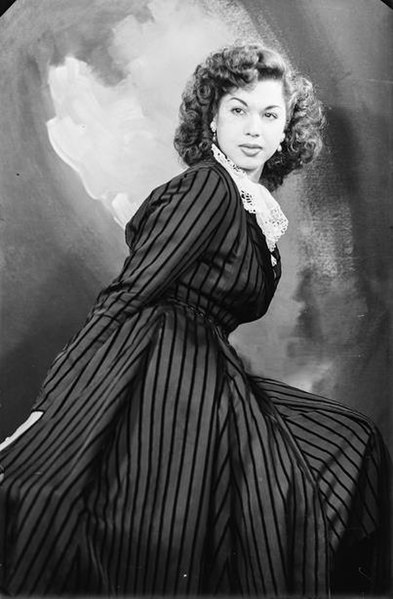
Tahia Carioca (1919 – 1999)
Born Badawiya Muhammed Karim Ali Sayed on February 22, 1919, in northern Egypt, Tahia Carioca, as she would later be known, started dancing as a teenager in Ismailia, where she had moved with her family soon after she was born. When she was a teenager, she ran away to Cairo and after seeing an advertisement in the newspaper for a job working for dancer Badia Masabni; Tahia applied for the position, and Badia selected her and Samia Gamal. While she was working, she watched Badia as she rehearsed, imitating her movements. Badia recognized her talents and hired her to perform in her dance troupe.¹⁹ She danced at Badia Masabni’s Casino Opera, where she developed her career as a soloist dancer not only on the stage but also in the burgeoning field of Egyptian cinema as a dancer and singer. She earned her stage name after Badia choreographed a solo for her loosely based on the Brazilian “Carioca” dance, but she was best remembered for her bint al-balad (daughter of the countryside) film roles, portraying women from working class backgrounds.²⁰ She also helped establish the dancer on film as a “good-hearted cabaret performer.”²¹ She was so respected (as much as a professional dancer could be, of course) that in 1936, she danced in King Farouk’s wedding procession to the accompaniment of singing by Umm Kulthum. Tahia Carioca is only one of very few dancers to have achieved such a high honor. In fact, Umm Kulthum once said that Tahia Carioca was an “artist who can sing with her body.”
In addition to being a dancer and actress in hundreds of films, she was also an intellectual, spoke fluent French and English, and was a political activist, unlike many Egyptian women of her time. Her political involvement helped her gain respect and to transcend the negative images of the cinema belly dancer.²² She continued her activism throughout her life, and every Egyptian leader (King Farouk, and Presidents Gamal Abdel Nasser and Anwar Sadat) except President Hosni Mubarak imprisoned her one or more times for her political outspokenness. Her artistic career lasted for 60 years, and Tahia is considered one of the great dancers of Egypt’s “Golden Age” of belly dance. In her later years, as Islamist groups gained a greater influence in Egypt, Tahia took the veil, and went on a pilgrimage to Mecca. ²³ Tahia Carioca died on September 20, 1999, of a heart attack at age 79. ²⁴
Naima Akef (1939 – 1966)
Born in 1939, Naima Akef began her performance career with her family’s own Akef Circus, in which she was an acrobat. After her parents separated and closed the circus in 1943, her grandfather obtained an audition for her at the Casino Badia, where her talent in both dancing and singing garnered her a starring role in the performance ensemble. However, after difficulties at the Casino Badia, she was fired and found work at the also famous Kit Kat Club, where film director Abbas Fawzy offered her the leading role in the film Al ‘Ish wal-Malh (Bread and Salt, 1949). She later went on to star in the classic films ‘Aziza (1955) and Tamr Henna (1957).
Naima was also known for her unique style, as she purposefully meant to create new presentations of the dance through her solo performances. Inspired by her work with her family’s circus, Naima Akef was one of the first to choreograph her own solo performances. Her performance of tap dance, Latin, and European dance forms allowed her to deviate from the stereotypical Oriental dancer roles in Egyptian film. ²⁵ One of her most famous roles was that of a lower-class mawlid dancer in Tamr Henna, in which she tries to marry above her status. Today, her legacy lives on, as most star Egyptian dancers today perform their own or others’ choreographies. She was also a member of one of Egypt’s first folkloric dance companies, Lail al-‘Ain Group, and contributed greatly to its success. Indeed, famous dancer Nagua Fouad claims Naima as one of her greatest inspirations. Naima quit acting and dancing in 1964 to take care of her only child; she died two years later from cancer, on April 23, 1966, at the age of 37. ²⁶
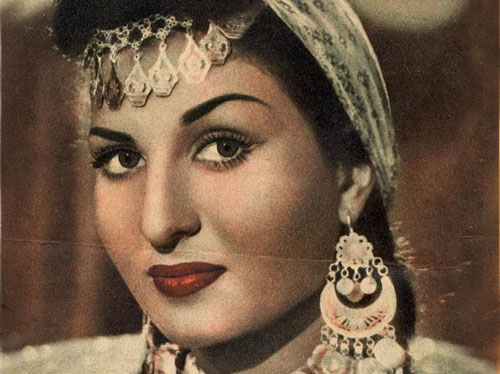
The content from this post is excerpted from The Salimpour School of Belly Dance Compendium. Volume 1: Beyond Jamila’s Articles. published by Suhaila International in 2015. This Compendium is an introduction to several topics raised in Jamila’s Article Book.
If you would like to make a citation for this article, we suggest the following format: Keyes, A. (2023). The Great Dancers: The “Golden Age”. Salimpour School. Retrieved insert retrieval date, from https://suhaila.com/the-great-dancers-the-golden-age
1 Anthony Shay and Barbara Sellers-Young, introduction to Belly Dance: Orientalism, Transnationalism & Harem Fantasy, ed. Anthony Shay and Barbara Sellers-Young (Costa Mesa, California: Mazda Publishers, 2005), 19.
2 Marjorie Franken, “Farida Fahmy and the Dancer’s Image in Egyptian Film,” in Images of Enchantment: Visual and Performing Arts of the Middle East, edited by Sherifa Zuhur (Cairo: The American University in Cairo Press, 1998), 267.
3 Viola Shafik, Arab Cinema: History and Cultural Identity, Revised (Cairo: The American University in Cairo Press, 2007), 103.
4 Priscilla Adum, trans., “Badia Masabni in 1966 Television Interview,” accessed December 15, 2013, http://www.shira.net/about/badia-interview-1966.htm.
5 Jalilah, “Badia Masabny: Star Maker of Cairo,” Gilded Serpent, February 16, 2009, accessed November 25, 2013, http://www.gildedserpent.com/art47/jalilahbadia.html.
6 Adum, “Badia Masabni.”
7 Jalilah, “Badia.”
8 Van Nieuwkerk, ‘A Trade Like Any Other’, 46.
9 Jalilah, “Badia.”
10 Ibid.
11 Ibid.
12 Ibid.
13 Van Nieuwkerk, ‘A Trade Like Any Other’, 46-48.
14 Additional Sources: “Badia Masabni,” Belly Dance Museum, accessed November 26, 2013, http://www.belly-dance.org/badia-masabni.html; Elias Antar, “La Danse du Ventre,” Saudi Aramco World Magazine, Sept.-Oct. 1971, 4-11, accessed December 29, 2014, http://www.saudiaramcoworld.com/issue/197105/la.danse.du.ventre.htm.
15 Franken, “Farida Fahmy,” 268.
16 Shay and Sellers-Young, introduction, 21.
17 Rufaida Mikdadi, “Egypt’s Barefoot Dancer,” The Middle East, 125 (1985): 57.
18 Additional sources: Zara Abdelrahman, “Samia Gamal,” accessed November 26, 2013, http://www.zaraszouk.co.uk/Samia_Gamal.htm; “Samia Gamal,” Belly Dance Museum, accessed November 26, 2013, http://www.belly-dance.org/samia-gamal.html; Jasmin Jahal, “A Ride on My Magic Carpet,” December 1999, accessed November 26, 2013, http://www.jasminjahal.com/articles/99_12.carpet.html; Hossam Ramzy, “Samya Gamal,” accessed November 26, 2013, http://www.hossamramzy.com/stars/starsofegypt_samya.htm.
19 Sabiha (Sabiha Worrell) and Hayatt (Harriet Trevas), “An Interview with Tahia Carioca,” Arabesque 2:4 (1976) 9.
20 Shay and Sellers-Young, introduction, p. 20.
21 Franken, “Farida Fahmy,” 268.
22 Ibid.
23 “Middle East: Farewell to Egypt’s Queen of Dance,” BBC, September 21, 1999, accessed December 2, 2013, http://news.bbc.co.uk/2/hi/middle_east/454010.stm.
24 Additional sources: Regina Hampton, “Tahia Carioca,” Serpentine Communications, accessed November 26, 2013. http://www.serpentine.org/yasmin/TahiaCarioka.htm; Youssef Rakha, “Dancing to the Rhythm of Time,” Al-Ahram Weekly Online, September 23-29, 1999, accessed November 26, 2013, http://weekly.ahram.org.eg/1999/448/cu1.htm; Hossam Ramzy, “Taheyya Karioka,” accessed November 26, 2013, http://www.hossamramzy.com/stars/starsofegypt_taheyya.htm; Edward Said, “Farewell to Tahia,” Al-Ahram Weekly Online, October 7-13, 1999, accessed November 26, 2013, http://weekly.ahram.org.eg/1999/450/cu4.htm; “Tahia Carioca,” Seven Veils, accessed November 26, 2013, http://www.sevenveils.co.uk/learning/articles/tahia.php.
25 Franken, “Farida Fahmy,” 268.
26 Additional sources: Jaene Castrillon, “Naima Akef: The Genie of Belly Dance,” accessed December 2, 2013, http://bodyraksbellydance.com/naima-akef-genie-of-bellydance; Hossam Ramzy “Naima Akef,” accessed December 2, 2013, http://www.hossamramzy.com/stars/starsofegypt_naima.htm; “Naima Akef 1929 – 1966,” Serpentine Communications, accessed December 2, 2013, http://www.serpentine.org/yasmin/NaimaAkef.html; “Naima Akef: Bellydance superstar of the 50s,” Belly Dance Museum, accessed December 2, 2013, http://belly-dance.org/naima-akef.html.
